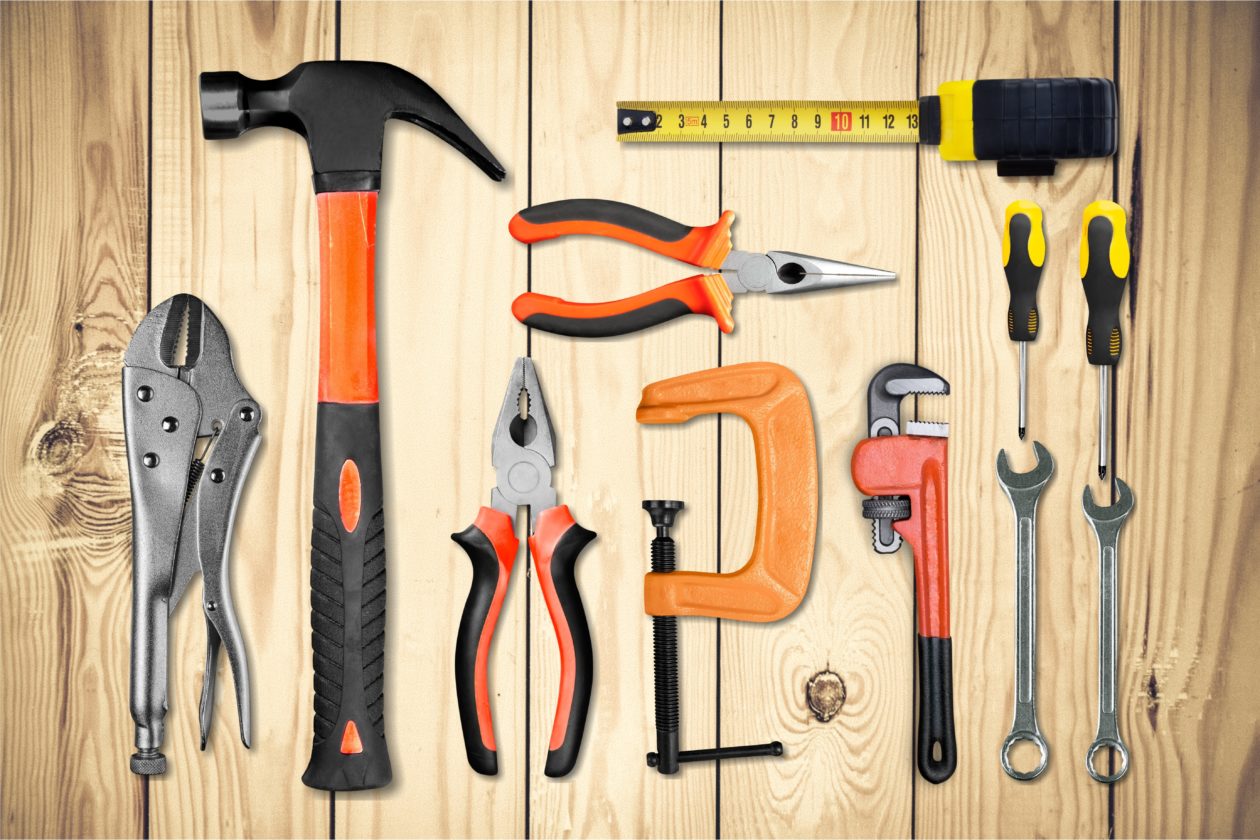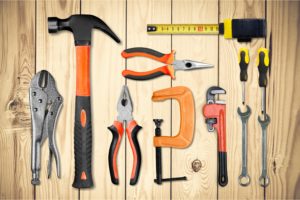
 Emergency plumbing repair can be expensive, but with the right tools, you may be able to take care of many clogs and leaks yourself. Clogged sinks and toilets, dripping faucets, and leaky pipes are all common home plumbing problems that a handy DIY homeowner could repair. When you need emergency plumbing repair, you may need to consult with a professional. However, if you choose to do it yourself, here’s a list of basic tools for your emergency plumbing repair kit.
Emergency plumbing repair can be expensive, but with the right tools, you may be able to take care of many clogs and leaks yourself. Clogged sinks and toilets, dripping faucets, and leaky pipes are all common home plumbing problems that a handy DIY homeowner could repair. When you need emergency plumbing repair, you may need to consult with a professional. However, if you choose to do it yourself, here’s a list of basic tools for your emergency plumbing repair kit.
- A plunger is the first tool you’ll want to use when faced with clogs in sinks, tubs, toilets, showers, and floor drains. Press down firmly to create a seal around the drain, then pull upward to vacuum the clog out. You may want to consider having at least two plungers; one for toilets and a separate one to use on sinks and tubs.
- Tongue-and-groove pliers, also known by the brand name Channellocks, are common pliers that plumbers use to grab, pull, twist, hold, tighten or loosen pipes and fittings. You’ll want to get tongue-and-groove pliers in two sizes, 10 inch and 12 inch, to handle common household tasks.
- A basin wrench is a great tool for tightening and loosening the nuts that hold sink faucets in place. The basin wrench has a long shaft and swiveling jaw that can reach into deep, narrow spaces behind sinks and lock on to the nuts. This is a specialty tool, and there aren’t other tools that can substitute for this one.
- A pipe wrench is a large heavy wrench used to tighten threaded pipes, fittings, and nuts. Serrated teeth help the wrench grip, but may damage a fixture’s finish, so be sure to wrap the wrench’s jaws in cloth to protect the fixture’s finish. It’s best to get two pipe wrenches so you can have one for turning and one to grip and hold.
- An adjustable wrench is required for working on compression fittings, supply lines, and other fixtures that have hex-shaped nuts. Again, it’s best to have two sizes of adjustable wrenches, 6 inch and 10 inch.
- A hacksaw can cut through metal pipes, screws, nuts, and plastic pipe. Keep extra blades on hand in case one breaks or wears down during tough cuts.
- A metal file can remove burrs and smooth rough edges on metal pipes after cutting. Two types of metal files are good to have in your toolbox: a half round file, which has both rounded and flat edges, as well as a rat-tail file, which is rounded and tapered.
- A hand auger, also known as plumber’s snake, is a hand-cranked tool for clearing drains. It typically has a 25-foot long flexible steel cable that can clear obstructions from toilets, tubs, showers, sinks, and drain lines. You can use a hand auger whenever a plunger fails to clear a clog.
- A closet auger is another clog-clearing tool, and it is specifically designed for unclogging toilets. It has a long steel cable to grind through and clear the toughest toilet clogs.
- A tubing cutter is the quickest, cleanest way to cut copper piping. It’s best to get tubing cutters in two sizes: a standard tubing cutter and a close-quarter mini cutter for working in tight spaces.
- A propane torch will be required if you’re going to sweat copper pipe and fittings.
- A fire-resistant cloth is used to protect combustible surfaces when soldering with an open-flame propane torch. Keep a fire extinguisher handy as well when working with combustibles.
- Plumbers putty and Teflon tape are useful when replacing a faucet or shower head. The putty acts as a seal between the faucet and sink, and Teflon tape is used on metal-to-metal thread connections of water lines to faucets.
Along with the above plumbing tools, you’ll want to make sure your toolbox is stocked with standard home repair tools such as a hammer, tape measure, screwdrivers, drill, utility knife, safety goggles, work gloves, and duct tape. A flashlight is also handy for seeing into dark spaces and checking for leaks on pipes.
For minor plumbing problems such as clogged drains or small leaks, it can save you time and money to attempt to repair the problem yourself. And when you can’t fix the problem yourself, consult a professional to prevent further damage to your plumbing system.
Here’s what you need to look for when hiring for emergency plumbing repair: same-day service, 24/7 emergency service, a stocked warehouse, non-commission based plumbers, hourly rates that make it easy to estimate jobs and keep projects affordable. If you need emergency plumbing repair, contact Scottsdale Plumbing and give us a call at 480-945-9583.
Write a comment: